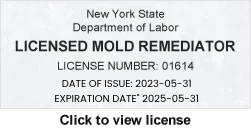
Our job is to help you keep your carpets in the best condition. Between professional cleanings, the most important thing you can do to keep your carpets looking great and maximizing their life is to vacuum frequently. We like to share tips occasionally on how to keep your vacuum in tip-top shape and troubleshoot common problems.
Sometimes, a vacuum can suddenly become hard to push. If the propulsion mechanism has failed, this is unfortunately something you probably can’t fix yourself. However, there are a few other problems that can cause a vacuum to be hard to push, and they can be easily resolved.
Check Height Settings
Most vacuums have height settings. Check to make sure you are using the appropriate setting. For example, if your vacuum is set to “bare floor” and you are trying to vacuum shag carpet, there simply is not enough room for the brush to rotate properly or for air to flow. With the proper height setting, your vacuum should move easily.
Check the Rotator Brush and Wheels
Sometimes pieces of string or other objects get wrapped around your vacuum’s rotating brush or around the wheels of the vacuum. Unplug your vacuum. Turn it over and have a look at the wheels and brush. If you see any pieces of string or objects lodged there, remove them. Set your vacuum upright and plug it in again. Turn it on to test whether the problem is resolved.
Replace the Brush Belt
If the vacuum is still hard to push, tilt it back far enough that you can inspect the moving brush while the vacuum is running. Be careful to avoid getting too close to the moving parts. If you see that the brush is not turning, that means you will need to replace the brush belt.
Replacing a vacuum brush belt is not difficult. Note the vacuum manufacturer and model number and purchase the appropriate belt at a local store, online, or directly from the manufacturer. Check your vacuum manual for specific directions on how to replace the belt. You may also find tutorial videos on the manufacturer’s website.
This is one of a series of articles written and published on behalf of surpHaces Partners.




